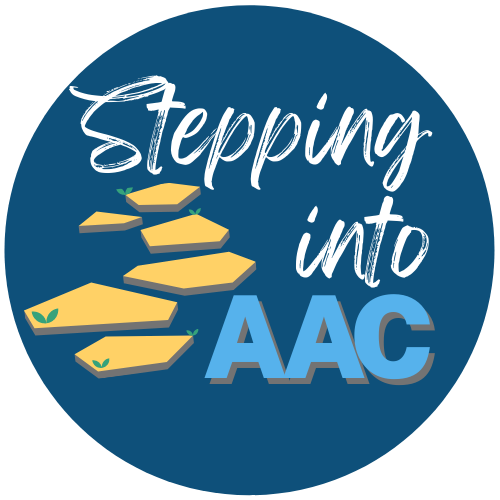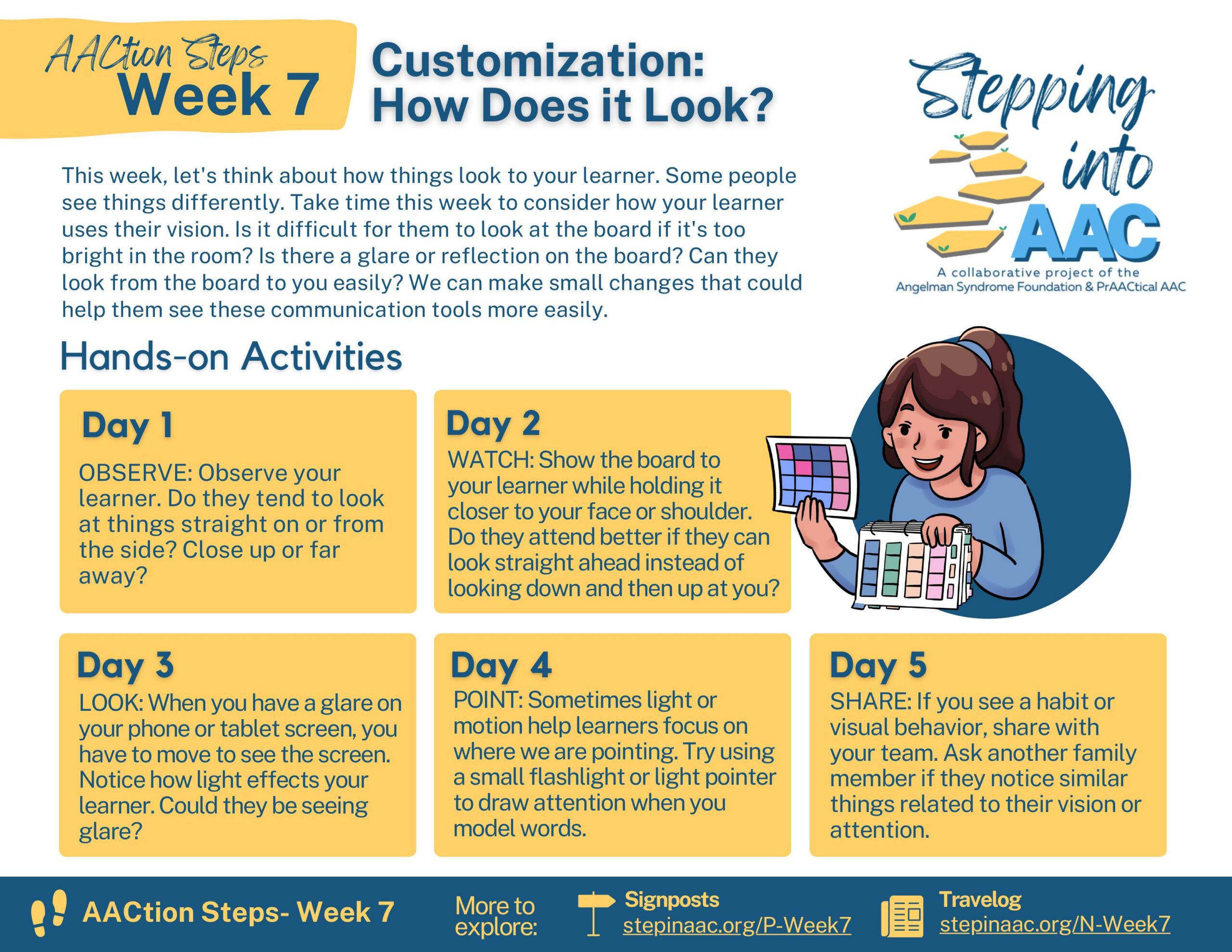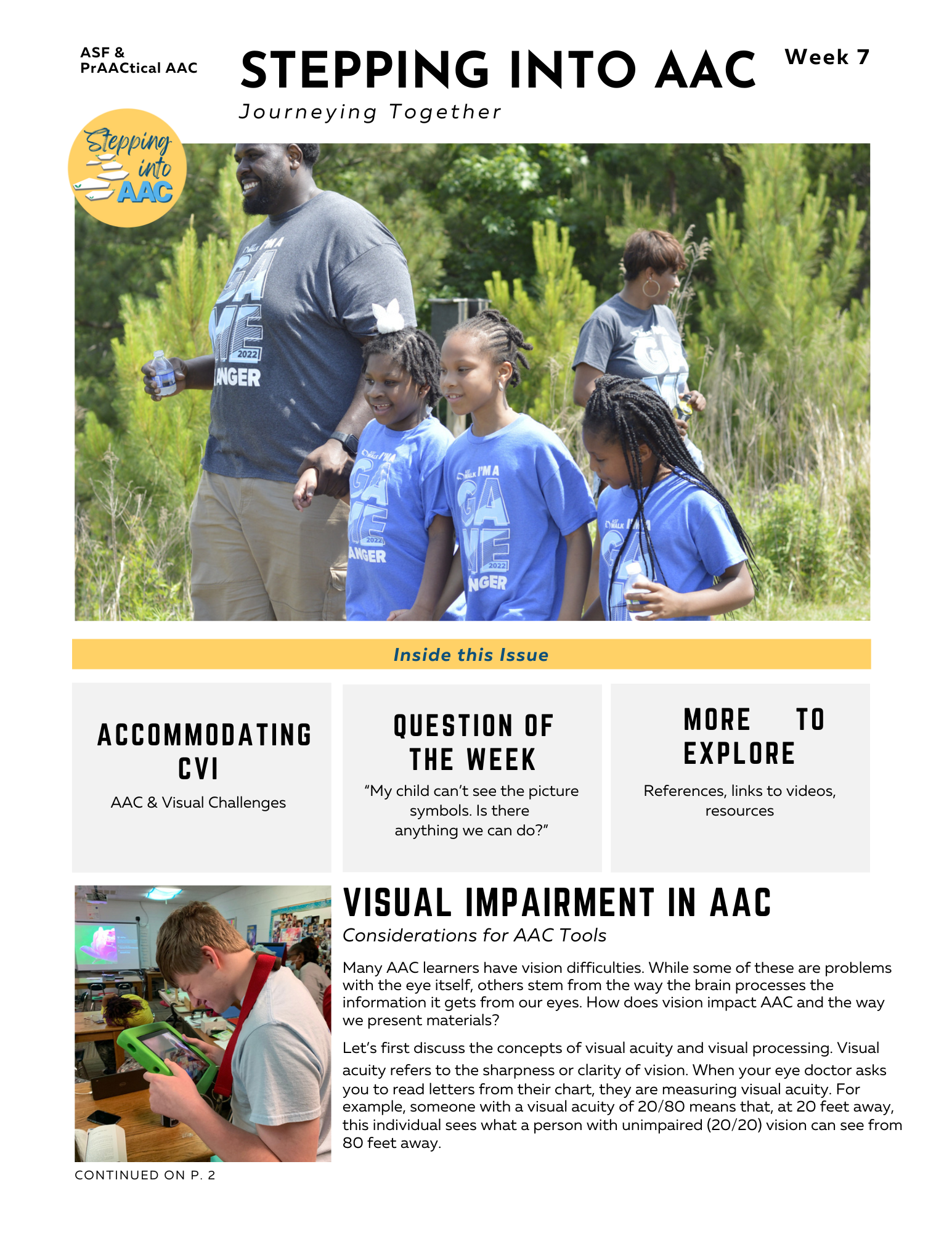
About This Week
Welcome to Week 7 of your Stepping into AAC journey! We continue to explore ways to customize our communication boards this week with a focus on accommodating challenges with vision and attention.
You will explore the following concepts this week:
- Be an Access Detective: What does ‘access’ mean in an AAC context, and how can we address this for AAC learners with complex bodies?
- Attention, Please! Explore the role of attention in AAC learning and how to accommodate challenges in this area.
- Customization to Address Challenges with Vision, Hearing, & Attention: Learn ways to personalize the communication board so that people with sensory and attention difficulties can be successful users of AAC.
- AAC Learners with CVI: Cortical vision impairment (CVI) can make AAC learning a lot more challenging. Learn about this condition and how we can support AAC learners with CVI.

AACtion Steps

Week 7 AACtion Steps

Signposts
Being an Access Detective
This text discusses the importance of observing individuals with complex bodies or limited attention to inform access options for Augmentative and Alternative Communication (AAC) systems. It emphasizes the need to notice how they communicate non-verbally, navigate spaces, manipulate materials, and interact with sensory stimuli. The observations can provide insights into how they negotiate their world and help support their AAC access both receptively and expressively.
Get the Handout
AAC & Attention
This video discusses the importance of understanding attention in individuals with disabilities and how it can be supported for communication and learning. It explores sensory factors, feedback features in AAC devices, paper-based tools, and strategies to enhance interaction and attention. Implementation tips for supporting attention are also provided.
Get the Handout
Supporting Low Vision, CVI, & DHH – Settings & Features
The video discusses the settings and features of AAC devices for learners with sensory impairments, particularly low vision and hearing impairment. It emphasizes the importance of preserving access to language development while making modifications.
Supporting Low Vision, CVI, & DHH: Teaching Strategies
This video discusses teaching strategies for AAC learners with sensory impairments, focusing on minimizing sensory demands and optimizing robust language through explicit teaching, motor planning, and masking.

Travelog

Week 7 Travelog
Print the Week
Want all of the resources shared in this week’s Stepping into AAC? You can download the entire digital bundle by clicking the download button below.
